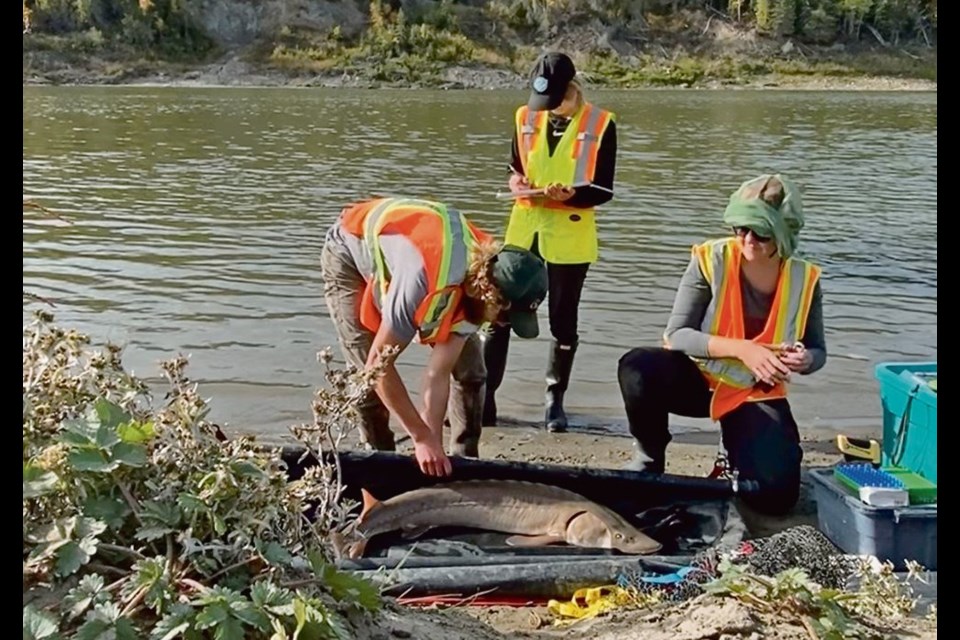WESTERN PRODUCER — Lake sturgeon are an endangered population of fish in Saskatchewan, but Saskatchewan Polytechnic is working to fight that.
In a study led by biologist David Halstead, researchers and students from the post-secondary institution are collecting demographic data of lake sturgeon without using invasive sampling methods from the North Saskatchewan River.
“We have this endangered species living in our river here,” Halstead said. “And nobody really has a very good handle on how that reproductive cycle drives the spawning schedule. We don’t know from one year to the next whether there’s going to be a large spawn or a small spawn.”
The study started in 2018, but after securing funding in 2020 from Cenovus and NSERC, researchers shifted more focus to the reproductive capacity of lake sturgeon in the North Saskatchewan River
“This redirection arises out of the realization that negative results related to spawning do not necessarily point to inadequate spawning habitat,” Halstead said.
Male lake sturgeon spawn only every three to five years and females spawn only every four to seven years, meaning the number of sturgeons hatched varies every year. For the endangered population in the North Saskatchewan River, it was important to learn more about the population’s demographics for the long-term sustainability.
After seeing researchers in Michigan and Russia use ultrasound to examine lake sturgeon, researchers at Saskatchewan Polytechnic decided to use that method as well. Through ultrasound, they can determine the sex of the fish and the reproductive conditions without harming it.
“So, we purchased an ultrasound and we’re trying to get some handle on the reproductive cycling of the population, so that we might be able to, at some point, actually project when those big banner years are going to be or whether it’s going to be a lull in spawning. We want to make sure that we’re doing it with minimal impact.”
To do this, the research team acquired help from local communities and fishers.
“They might come across the sturgeon in their fishing, and they’ll give us whatever data they come across,” Halstead said. “But we’re trying not to encourage or target sturgeon by the recreational fishers. And so, we really try and downplay the trophy catch pictures.”
Halstead said it’s not just about collecting the data, it’s also about spreading the word about the decline of lake sturgeon.
“We also want to generate a little bit of concern for the species and make sure that if (fishers) do have occasion to handle the fish, that they handle it properly by supporting the weight of the fish in the middle and please don’t pick them up by the gills or in any other way that might lead to physical damage.”
Cole Tomlinson, research technologist with the study and a recent grad of Saskatchewan Polytechnic, said lake sturgeon must be studied and protected.
“Seeing and catching these giant fish and helping work towards their conservation has just always been a dream of mine,” he said.
Tomlinson said he hopes they can spread awareness about the lake sturgeon’s endangered status in Saskatchewan and help protect them.

